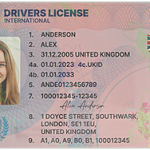Understanding Real ID and the Push for Compliance
The Real ID Act, passed by Congress in 2005, set new standards for state-issued driver’s licenses and identification cards to enhance security and reduce fraud. These IDs, marked with a gold star in the top right corner, are required for accessing federal facilities, boarding domestic flights, or entering nuclear power plants. Over 18 years later, states continue to work toward full compliance with these federal guidelines. This article explores how states are measuring up, the metrics used to track progress, and what non-compliance means for residents.
—
How Compliance Is Measured: Key Metrics from DHS
Compliance is not a binary “yes/no” status. The U.S. Department of Homeland Security (DHS) evaluates states across five core criteria, each designed to ensure IDs meet minimum security and verification standards:
1. **Document Verification**: States must verify the authenticity of birth certificates, social security cards, and proof of residency provided by applicants. This includes cross-checking documents against federal databases to prevent fraud.
2. **Security Features**: IDs must include physical safeguards like holograms, barcodes, or radio-frequency identification (RFID) chips to deter counterfeiting.
3. **Database Interconnectivity**: State motor vehicle departments (MVDs) must share data with a national system to prevent individuals from obtaining multiple IDs across states.
4. **Issuance Policies**: Rules for replacing lost IDs, renewing expired cards, and handling name changes must align with federal guidelines to maintain consistency.
5. **Public Awareness**: States are required to inform residents about Real ID requirements, including which documents are needed and deadlines for compliance.
DHS categorizes states into three tiers: *Fully Compliant*, *Conditionally Compliant* (meeting some but not all criteria), and *Non-Compliant* (failing to meet key standards).
—
Current State of Compliance: A National Snapshot
As of 2024, 48 states, the District of Columbia, and four U.S. territories have achieved at least conditional compliance with Real ID. Only two states—Minnesota and Missouri—remain in the non-compliant category, though both have submitted plans to DHS for improvement.
### Regional Variations in Progress
– **Northeast**: States like New York, New Jersey, and Massachusetts reached full compliance by 2020. These regions leveraged existing digital infrastructure to streamline document verification.
– **South**: Texas, Florida, and Georgia faced initial delays due to high population density and complex residency verification processes. Texas, for example, spent $50 million upgrading its MVD systems to handle Real ID checks, achieving full compliance in 2022.
– **West**: California and Washington led early adoption, with both states rolling out Real ID options in 2018. However, California temporarily paused issuance in 2021 after a backlog of document reviews overwhelmed local DMV offices.
– **Midwest**: Illinois and Ohio struggled with database interconnectivity but resolved issues by 2023. Minnesota, the largest holdout, cites funding shortfalls for its delayed progress; the state estimates it needs $30 million to upgrade its systems.
—
Challenges in Achieving Compliance
States face unique hurdles in meeting Real ID standards. Common obstacles include:
– **Funding Limitations**: Upgrading technology, training staff, and public outreach require significant investment. Smaller states like Wyoming and Vermont rely on federal grants to cover these costs.
– **Public Resistance**: Some residents oppose sharing additional personal information, citing privacy concerns. This has led to delays in states like Montana, where lawmakers temporarily blocked Real ID implementation in 2019.
– **Bureaucratic Delays**: Coordinating between state agencies (e.g., health departments for birth certificates, social security offices) can slow document verification. In Louisiana, a 2020 backlog of birth certificate requests delayed Real ID processing by six months.
– **Technical Upgrades**: Integrating state databases with the national DHS system demands specialized IT work. States like Alaska, with remote populations, struggle to ensure rural DMV offices have reliable internet access for real-time checks.
—
What Non-Compliance Means for Residents
Residents of non-compliant states can still use their current licenses for driving, but they’ll need an alternative form of identification (e.g., a U.S. passport, military ID, or global entry card) for:
– Domestic air travel (post-May 7, 2025, the final deadline for full compliance).
– Entering federal buildings like courthouses or military bases.
– Accessing nuclear power plants.
DHS has extended deadlines multiple times to give states more time, but the 2025 deadline is final. After that date, non-compliant IDs will no longer be accepted for federal purposes.
—
Common Questions About Real ID Compliance
Here are answers to five frequently asked questions to help residents navigate Real ID requirements:
### 1. *How do I check if my state is compliant?*
Visit the DHS Real ID page (dhs.gov/real-id) or your state’s MVD website. Most states list their compliance status prominently, along with links to application guides.
### 2. *What documents do I need for a Real ID?*
You’ll need:
– Proof of identity (e.g., birth certificate, valid passport).
– Social Security number (SSN) verification (SSN card, W-2 form).
– Two proofs of residency (e.g., utility bills, lease agreements).
– If your name has changed, legal documentation (marriage certificate, court order).
### 3. *Can I renew my license without getting a Real ID?*
Yes. States issue non-Real ID licenses that are valid for driving but not for federal purposes. However, if you plan to fly domestically or enter federal facilities after 2025, you’ll need a Real ID or alternative ID.
### 4. *What if my state is conditionally compliant?*
Conditionally compliant states meet most Real ID criteria but need to resolve minor issues (e.g., updating security features on older ID batches). DHS allows their IDs to be used for federal purposes until the state achieves full compliance or the 2025 deadline, whichever comes first.
### 5. *Is there a grace period if I miss the 2025 deadline?*
No. DHS has emphasized that the 2025 deadline is final. To avoid disruptions, residents of non-compliant states should apply for a Real ID or secure an alternative form of identification (like a passport) well in advance.
—
By understanding how states are measured, the challenges they face, and the steps residents can take, individuals can better prepare for the 2025 deadline. Staying informed and proactive ensures a smooth transition to the new security standards.


